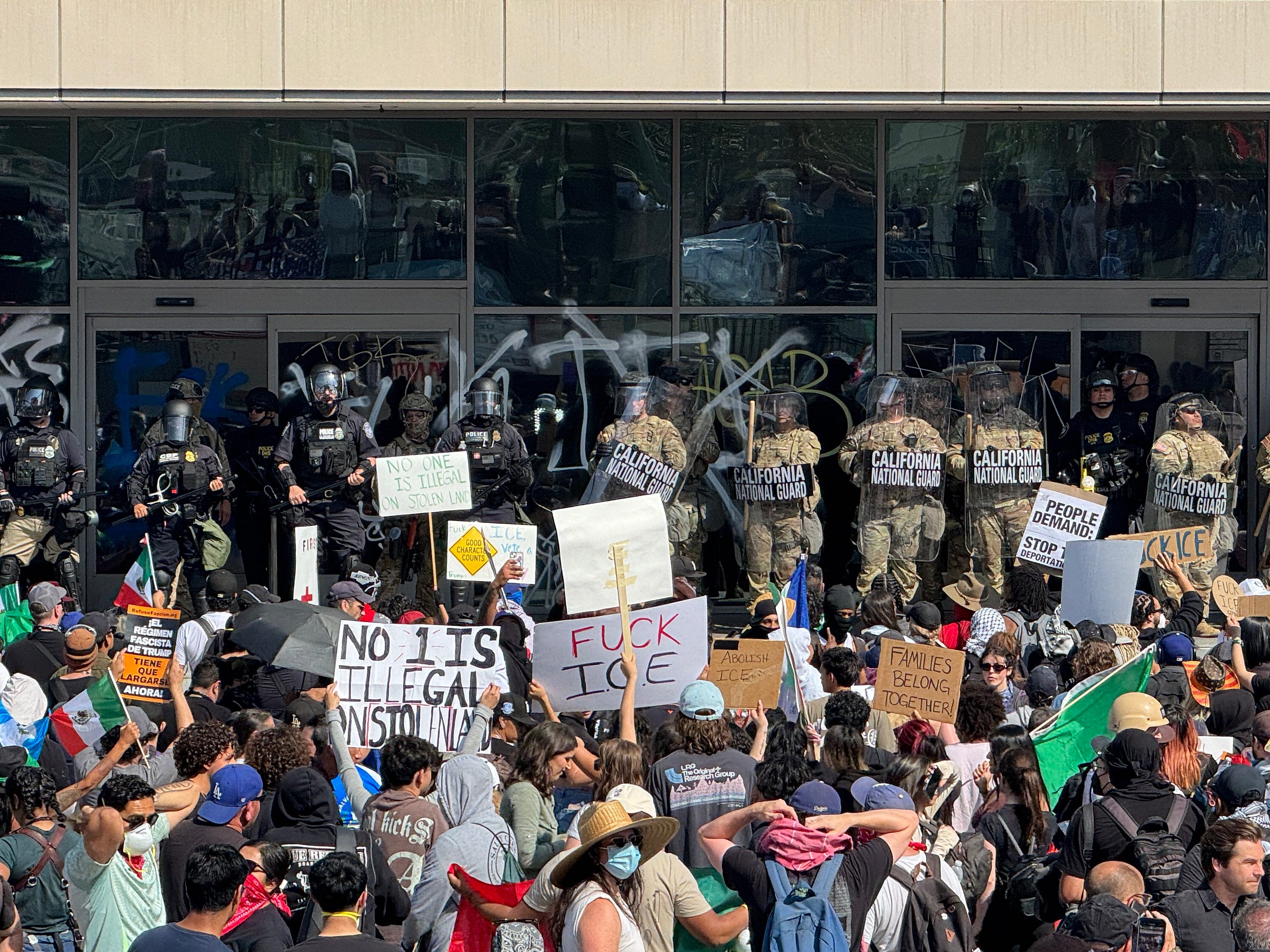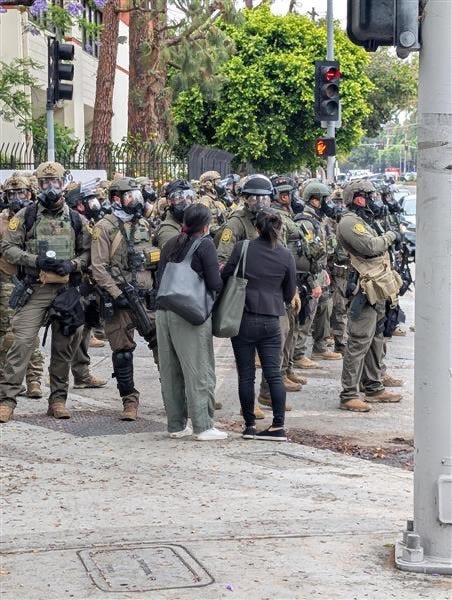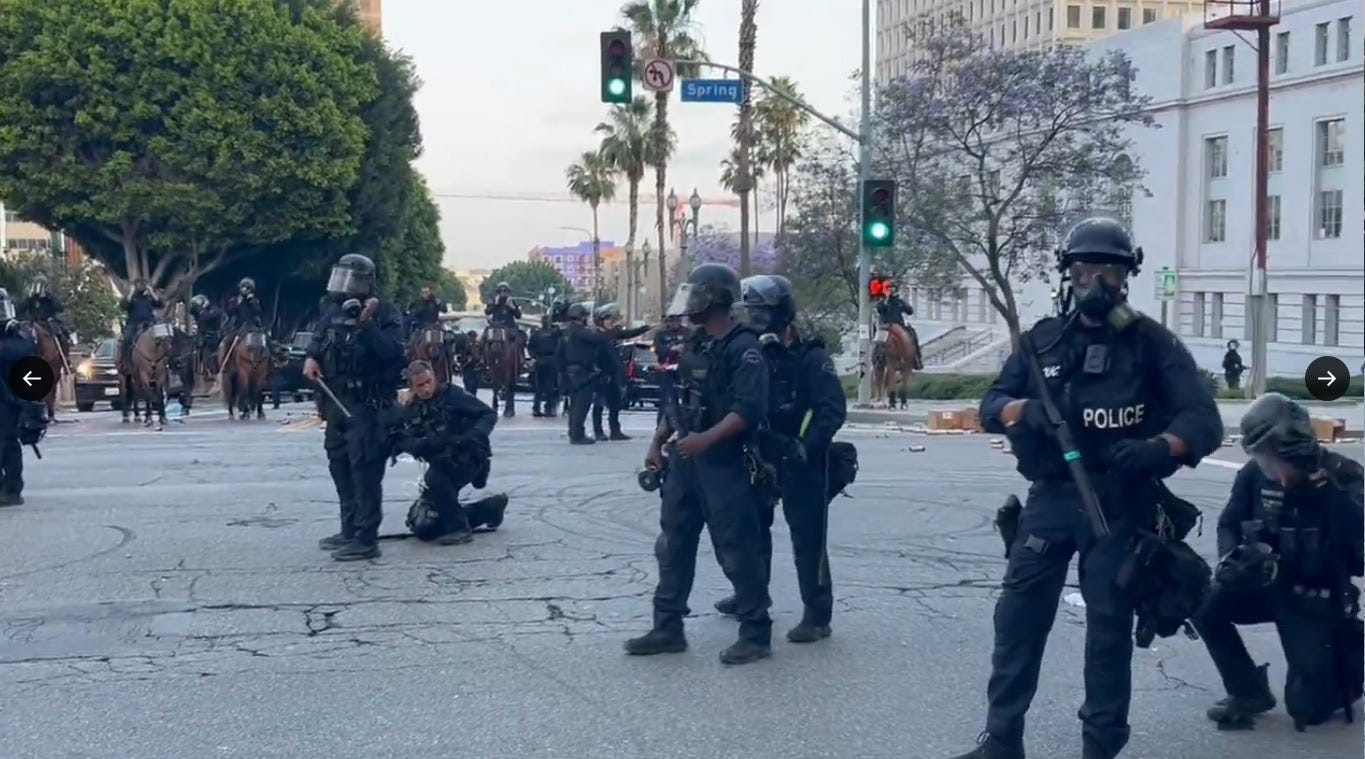Trump wanted the "Battle of Los Angeles." Instead, Latinos have inspired a national uprising
Latino communities in L.A. have played an integral and instructional role in protests that are inspiring actions in dozens of other U.S. cities

El Pueblo unido, jamás será vencido! -A united people will never be defeated
Protests in Los Angeles that broke out across the city after a series of Immigration and Customs Enforcement (ICE) workplace raids have captured the imagination of the country and the ire of U.S. President Donald Trump. Since they erupted last week, protesters have squared off against the L.A. Police Department, personnel from the Department of Homeland Security (DHS), U.S. Marshals, and even the California National Guard.
But to me, having covered protests both in the U.S. and in half a dozen countries in Latin America, I have been struck by a crucial difference between L.A. and other places where ICE protests have been ongoing for months — they are Latin American style protests.
The chants often are the same ones I have heard across the region for years, from Mexico to Peru, as are many of the tactics. Flags from Mexico, Honduras, El Salvador, Puerto Rico, Argentina, and other LATAM countries have a constant presence in the streets, in images being transmitted around the world.
Protests in Latin America are often more effective and more radical than those carried out by their North American brothers and sisters because they are tactical. Protesters often block major highways, shutting down transport and trade.
In cities, they are often highly mobile, with protesters staging marches and direct actions that feint, fade, and return again, spreading out security forces. When I first arrived in Latin America, I was often struck by how resistant protest movements are to state oppression.
The U.S. rarely matches the intensity of even routine protests in Colombia, Ecuador, Mexico, or Chile, where liberation movements have a long and storied history, and where indigenous struggles with state security forces are constant.
Even when U.S. protests come close to matching the intensity of those in LATAM, such as during the George Floyd protests of 2020, they have never faced near the level of violence that both state and non-state forces often inflict on social movements in Latin America.

In recent weeks, many commentators have spoken of “colonial boomerang”: the idea that oppressive force, counterinsurgency, and violent state tactics that the U.S. developed abroad over decades are now being used against the domestic population.
Latin America was the laboratory for many of those tactics. Counterinsurgency as a U.S. doctrine was developed in places like Colombia, Nicaragua, Honduras, Chile, Argentina, El Salvador, and Panama.
Trump’s “flood the zone” tactics with mass ICE raids, domestic surveillance, and his willingness to use the military on civilian and migrant populations are new and shocking to most people in the United States.
To those with histories, families, and a familiarity with dynamics in most Latin American countries, however, they are old hat. They haven’t only seen these tactics before, they have beaten them.
In addition, many members of Latino communities have been organizing for years in Los Angeles and have deep ties with both labor unions and social movements in other communities.
They are now putting those resources to use in the fight against ICE.
Trump wanted the “Battle of Los Angeles”, an easy victory via an overwhelming show of force in a largely Democrat-voting migrant city. Instead, however, protests with large and very visible Latino elements have given him a national uprising.
Their struggle has spread to dozens of other major cities. Trump and members of his administration have grown increasingly angry at the resistance. Monday, the Secretary of Defense announced a deployment of Marines to L.A. “due to increased threats to federal law enforcement officers and federal buildings.”
The presence of so many protesters from the Latino community in L.A. isn’t surprising. People who identify as Latino or Hispanic number more than 4.8 million — a figure that represents more than 48% of the population in the city.
They are also a population that has been disproportionately represented among those ICE snatches off the streets, from their workplaces, and even from the arms of loved ones.
The factors for this phenomenon are many, including that Latinos from North and Central America represent some of the largest migrant groups in the country, but it is also due to systemic racism.
U.S. customs and visa policy has long made entering the country much easier for citizens of wealthy, predominantly white European countries than for those from Latin America — a dynamic which has only worsened under Trump.
It is also important to note that, despite hyperbolic claims from Trump and members of his administration, most of Los Angeles is unaffected by ongoing protests. The greater L.A. area is huge, and protests so far have been concentrated downtown and in Latino communities.
The vast majority have also been overwhelmingly peaceful, and in instances that have resulted in clashes with police, it is often security forces that have escalated with violent tactics.
As of Monday afternoon, at least 150 people have been arrested in Los Angeles since the protests began, and city officials have warned that further disruptions could continue throughout the week.
Trump has described protesters as “insurrectionists” and “professional agitators” who “should be in jail.”
As I wrote this piece, I was watching a livestream of protests in Dallas, Texas —incidentally, the city of my birth. Crowd shots were peppered with flags from Mexico, Honduras, and Puerto Rico. Someone was blasting Ruben Blades salsa tracks on a loudspeaker as protesters chanted, “A people! United! Will never be divided!”
I couldn’t help but smile at an English translation, modified for rhyming purposes, which I myself have heard a thousand times at a hundred protests in half a dozen countries in LATAM.
Trump has massively underestimated what he is really up against.
El Pueblo unido, jamás será vencido!
You can also donate a one-time gift via “Buy Me a Coffee”. It only takes a few moments, and you can do so here.
And if you can’t do any of that, please do help us by sharing the piece! We don’t have billionaire PR teams either. haha






Thank you for this piece! I knew it when Trump won - we'd have a lot to learn. Ppl think this stuff could never happen in the "first world" but it's been happening and it can happen anywhere.